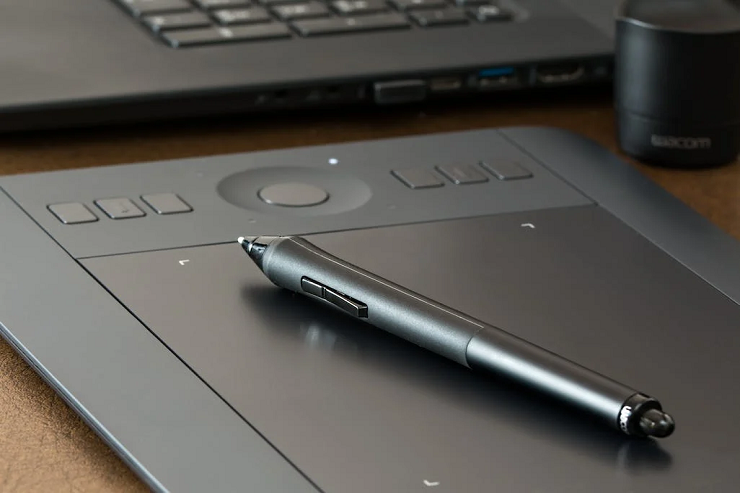
In the ever-evolving world of digital art and design, the tools at an artist’s disposal play a pivotal role in shaping their creative process and the quality of their work. Designers and illustrators have relied on the trusty computer mouse as their primary input device for years. However, there has been a remarkable evolution in the realm of digital art, and a new star has emerged: the drawing tablet. This article will delve into the history and evolution of drawing tablets and discuss why designers should consider switching from the traditional mouse to these innovative devices.
The Early Days of Digital Art
Before we explore the advantages of drawing tablets, let’s take a step back and understand the early days of digital art. In the 1980s and 1990s, digital art was in its infancy, and designers had limited options for creating digital illustrations. The primary tool was the computer mouse, a device designed for general computing tasks, not precise artistic endeavors. Artists had to wrestle with the mouse to create their digital masterpieces, leading to limitations in terms of precision and control.
1. The Advent of Drawing Tablets
The turning point in the world of digital art came with the introduction of drawing tablets. These innovative devices, also known as graphic tablets or pen tablets, were specifically designed to cater to the needs of artists and designers. Wacom, a pioneering company in this field, introduced the first commercially available drawing tablet, the Wacom ArtPad, in 1991.
Unlike the traditional mouse, drawing tablets allowed artists to work directly on the screen, offering a natural and intuitive drawing experience. The tablet featured a stylus that could be used to draw and paint directly on the tablet’s surface, replicating the feel of traditional pencil and paper. This game-changer for the design industry provides artists with a more precise and expressive tool for their craft.
2. The Rise of Pressure Sensitivity
One of the key advancements that drew artists to drawing tablets was the introduction of pressure sensitivity. This technology allowed the tablet to detect varying levels of pressure applied to the stylus, simulating the effects of different drawing tools such as pencils, pens, and brushes. This innovation brought a new level of nuance and realism to digital art, making creating intricate and detailed illustrations easy.
With pressure-sensitive drawing tablets, artists could control line thickness, and opacity, and shading by simply adjusting the pressure they applied to the stylus. This level of control was simply unattainable with a traditional mouse, which offered no such sensitivity.

3. The Emergence of Touch and Gesture Controls
As technology advanced, drawing tablets evolved even further. Many modern drawing tablets now come equipped with touch and gesture controls, adding a layer of versatility to the artist’s toolkit. With touch capabilities, artists can use multi-finger gestures to zoom in, rotate, and navigate their canvas, making the creative process more intuitive and efficient.
Gesture controls have also opened up new possibilities for interaction and control in digital art software. Artists can assign specific gestures to perform various actions, streamlining their workflow and reducing the reliance on keyboard shortcuts and on-screen menus.
4. The Integration of Display Tablets
Another significant milestone in the evolution of drawing tablets is the integration of display tablets. Unlike traditional drawing tablets, display tablets have built-in screens, allowing artists to draw directly on the display surface. This creates a seamless and immersive drawing experience that closely mirrors traditional media.
Display tablets have become a favorite among professional artists and illustrators for their precision and immediate visual feedback. They eliminate the disconnect between the artist’s hand and the screen, providing a direct and natural way to bring ideas to life digitally. Although display tablets are typically more expensive than non-display alternatives, many artists find the investment well worth it for the improved workflow and results they offer.
Also Read: How To Enhance User Experience On Your Website
5. Why Designers Should Ditch the Mouse?
Now that we’ve explored the remarkable evolution of drawing tablets, let’s discuss why designers should seriously consider leaving their trusty mice behind and embracing these innovative devices.
-
Precision and Control
Drawing tablets offer unmatched precision and control over digital artwork. With pressure sensitivity and stylus support, artists can easily create fine lines, intricate details, and smooth gradients. This level of control is essential for design work that demands perfection and attention to detail.

-
Natural Drawing Experience
Unlike a mouse, which requires hand-eye coordination to navigate a digital canvas, drawing tablets provide a more intuitive and natural drawing experience. Artists can directly see where they are drawing, making it easier to translate their creative vision onto the screen.
-
Speed and Efficiency
Drawing tablets, especially those with touch and gesture controls, can significantly speed up the design process. Artists can quickly switch between tools, zoom in and out, and manipulate their artwork with fluid gestures, reducing the time spent on repetitive tasks and improving overall efficiency.
-
Versatility
Drawing tablets are versatile tools that can handle various artistic styles and techniques. Whether you’re creating detailed illustrations, digital paintings, vector graphics, or 3D models, a drawing tablet can adapt to your needs and provide the necessary tools for each project.
-
Ergonomics and Comfort
Using a drawing tablet can be less physically demanding than a mouse, as it promotes a more natural hand and wrist position. This can help prevent the development of repetitive strain injuries (RSI) that can be common among designers and artists who spend long hours working on a computer.
Conclusion
The evolution of drawing tablets has revolutionized the way artists and designers create digital art. These devices have brought precision, control, and a natural drawing experience to the forefront of digital design, making them an indispensable tool for creative professionals. While the mouse has served its purpose well in the past, it’s time for designers to consider ditching it in favor of the drawing tablet to unlock their full creative potential and take their art to new heights. As technology continues to advance, we can only imagine the exciting innovations that lie ahead in the world of digital art and design.
